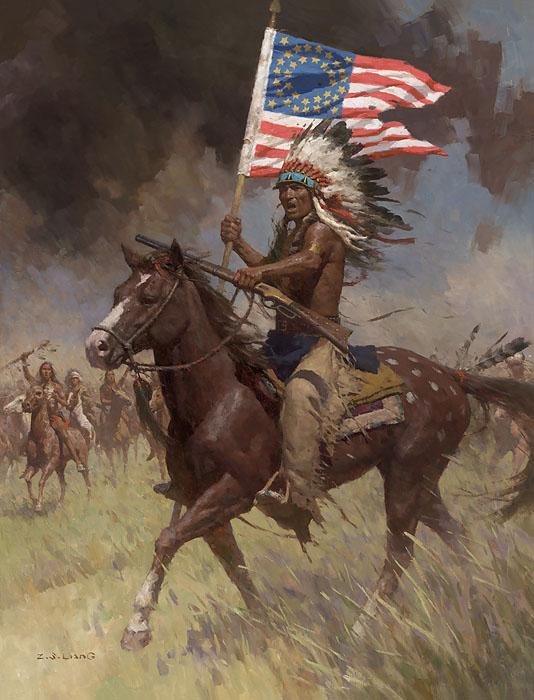No products in the cart.
Lakota Warriors, Little Big Horn, June 25, 1876
“During late 1875 and early 1876,” begins Liang, “young warriors were slipping away from their agencies to join bands of non-treaty Indians in the country east of the Bighorn River. American government authorities, in response to reports of this, ordered all Lakota bands to return to their reservation by February 1, or face the consequences. Sitting Bull, Crazy Horse and the other leaders not only ignored the order, they were determined to fight for their freedom.
“By mid-June, Sitting Bull and his followers were camped along the Little Bighorn River. And the U.S. Army was on their way to force the Indians to return. On June 25, Lieutenant Colonel George Armstrong Custer and approximately 250 Seventh Cavalry solders attacked this Indian village. They found themselves confronted by an enormous encampment thronging with furiously committed warriors. They were quickly surrounded and annihilated in what American history would refer to as ‘Custer’s Last Stand.’
“Known to the Indians as the Battle of the Greasy Grass, this painting focuses on the combined tribes celebrating their victory. The main figure is a Lakota warrior. He is holding, as his trophy, a Seventh Cavalry 35 Star guidon. (This unit marker became official in 1862 and was still in use when Custer rode west.) This flag and the spear point of the pole, specific to that time period, were provided to me by a good friend and Civil War historian from his personal collection.”
Lakota Warriors, Little Big Horn, June 25, 1876
Z. S. Liang
This Piece has been Signed by Z.S. Liang

